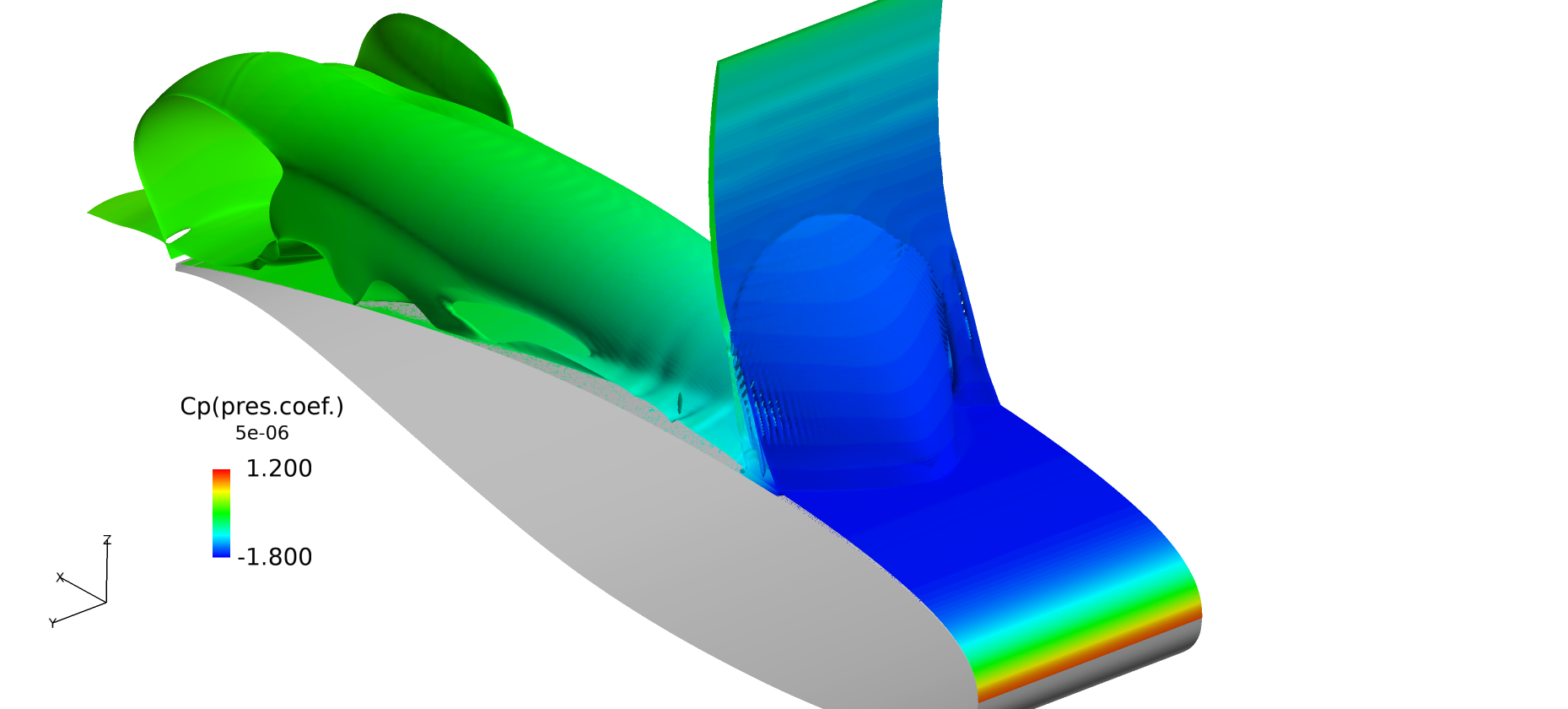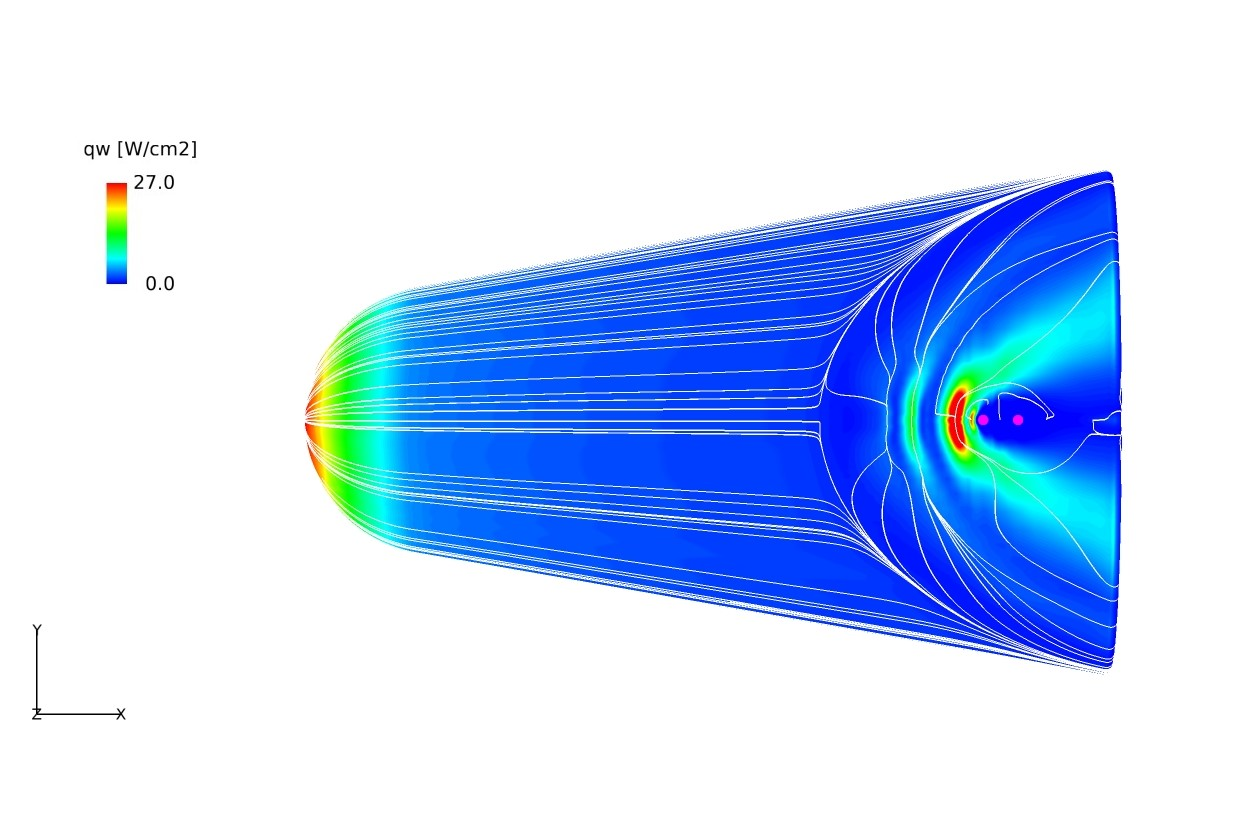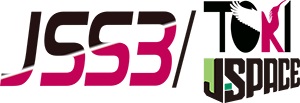Supersonic and hypersonic aerodynamic characteristics of a projectile with shock wave interference
JAXA Supercomputer System Annual Report April 2019-March 2020
Report Number: R19EACA20
Subject Category: JSS2 Inter-University Research
- Responsible Representative: Keiichi Kitamura, Yokohama National University, Faculty of Engineering, Division of Systems Research
- Contact Information: Keiichi Kitamura(kitamura@ynu.ac.jp)
- Members: Keiichi Kitamura, Hiroyuki Takimoto, Naoya Hase, Hiroto Yaginuma
Abstract
In the velocity region where shock waves are generated, there are various difficulties in numerical calculations, as well as many undiscovered flow physics. In this study, we performed various numerical calculations under supersonic conditions: high-speed buffet conditions for a wing with shock wave oscillation, supersonic flow conditions around rocket configurations including clustered cold plume jet interference, and a hypersonic flow around a blunt-body interacting with a side jet for its attitude control. Throughout these simulations, we pursued a new, shock-related, flow physics covering a wide range of velocity conditions.
Reference URL
N/A
Reasons and benefits of using JAXA Supercomputer System
Reproduction of shock wave oscillation by high-speed buffet, reproduction of cold plume jet interference in supersonic flow, and reproduction of aeroheating on blunt body by hypersonic flow / side-jet aerodynamic interaction are all tough calculations. Thus, they require high resolutions in space and time, and hence, the computation cost.
Achievements of the Year
1. Suppression of high-speed buffet by Vortex Generator
For a transonic two-dimensional airfoil NASA SC (2) – 0518 with a chord length c = 200 [mm], a Reynolds number Re = 5×10^6 with a uniform flow Mach number M = 0.7, we changed each parameter of Blade-type-VG (Figure 1 shows VG position Cv = 0.2 (= x / c), VG height Hv = 1.2 [mm], VG distance Dv = 40 Hv (= 48 [mm]), VG length Lv = 4 Hv (= 4.8 [mm]), with VG angle Av = 20 [degree]). As a result, compared with the base case where the normal shock wave and VG interfered, the lift was improved by arranging Cv more upstream, Hv lower, and Dv smaller. Lv and Av did not affect the flow field significantly.
2. Interaction of clustered cold plume jets ejected from rocket shape in supersonic flow
A supersonic jet was ejected from the nozzle of the three-dimensional projectile model in an environment with a uniform flow Mach number M = 1.5, and the interference between the jet and the uniform flow was observed. In this study, the number of nozzles was set to one or two. As a result, in the case where the distance between nozzles is the largest (the uniform flow interferes with the side surface of the nozzle: ref. Figure 2), the axial force does not increase and the propulsion performance is expected to improve.
3. Numerical Simulation on Hypersonic Heating associated with Jet Aerodynamic Interaction
Under the condition of uniform flow Mach number M = 8.1, supersonic air was injected from two nozzles (nozzle diameter Dj = 1.5 [mm]) installed behind a blunt body with length L = 120 [mm] and radius of curvature Rb = 20 [mm]. A set of numerical simulations were performed by changing the distance between the nozzles and their arrangement. As a result, when the nozzles were arranged in the direction of the freestream, the heat flux peak value became the maximum at the distance between the nozzles of 3.36 Dj (the smallest among the calculation cases), as shown in Fig. 3 for the heat flux contours and streamlines on the surface. It has also been clarified that the flow field upstream of the nozzle was not significantly affected by the arrangement of the nozzles.

Fig.1: Q iso surface colored with pressure coefficient Cp (suppression of high-speed buffet by Vortex Generator)

Fig.3: Computed surface flow pattern and heat flux contours at distance between nozzles of 3.36Dj (Numerical Simulation on Hypersonic Heating associated with Jet Aerodynamic Interaction)
Publications
– Oral Presentations
Naoya HASE, Keiichi KITAMURA, “Hypersonic Aeroheating Computation on Side Jet Aerodynamic Interaction”, The Japan Society of Fluid Mechanics Annual Meeting 2019
Usage of JSS2
Computational Information
- Process Parallelization Methods: MPI
- Thread Parallelization Methods: OpenMP
- Number of Processes: 288 – 480
- Elapsed Time per Case: 30 Hour(s)
Resources Used
Fraction of Usage in Total Resources*1(%): 0.33
Details
Please refer to System Configuration of JSS2 for the system configuration and major specifications of JSS2.
| System Name | Amount of Core Time(core x hours) | Fraction of Usage*2(%) |
|---|---|---|
| SORA-MA | 2,498,744.81 | 0.30 |
| SORA-PP | 28,795.33 | 0.19 |
| SORA-LM | 12,351.37 | 5.16 |
| SORA-TPP | 0.00 | 0.00 |
| File System Name | Storage Assigned(GiB) | Fraction of Usage*2(%) |
|---|---|---|
| /home | 288.01 | 0.24 |
| /data | 9,670.26 | 0.17 |
| /ltmp | 2,343.75 | 0.20 |
| Archiver Name | Storage Used(TiB) | Fraction of Usage*2(%) |
|---|---|---|
| J-SPACE | 2.97 | 0.07 |
*1: Fraction of Usage in Total Resources: Weighted average of three resource types (Computing, File System, and Archiver).
*2: Fraction of Usage:Percentage of usage relative to each resource used in one year.
JAXA Supercomputer System Annual Report April 2019-March 2020



